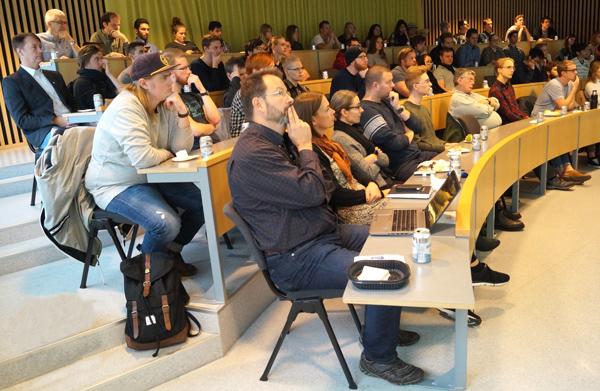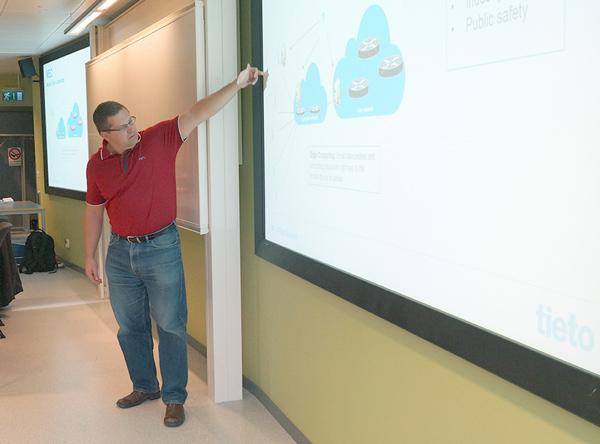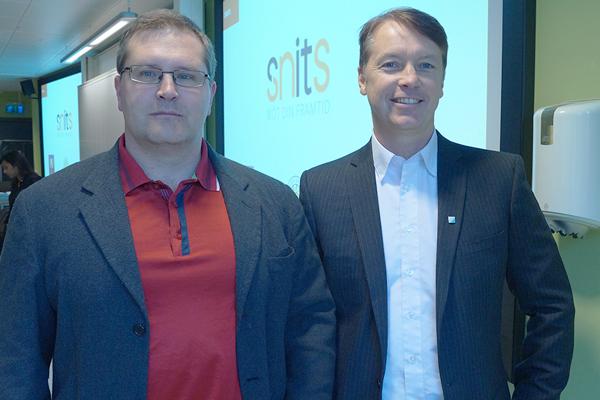Mobile revolution or evolution?
2016-10-13This was one of the questions that the IT consultancy firm Tieto tried to sort out when they gave a lecture on the mobile networks in the past and in the future to over 70 IT students at Karlstad University at the autumn semester first Snits lunch.
Currently the development of the next generation mobile net 5G is in progress, which will lead to revolutionary changes for users and operators. Many citizens today would argue that we are in the middle of the digital evolution.
- The first generation mobile network was launched in the1980s. It was analogous and can be compared to an advanced walkie-talkie technology, says Lars Lindeberg, Lead Business Developer ay Tieto. I would call the units used at that time draggable rather than mobile or portable.
At the beginning of the 90s, the second generation mobile network, GSM, was introduced, and the analogous technology was replaced by digital technology. This meant services such as SMS and multiple talks. The technology was developed and soon users could send MMS and use WAP to surf the internet. The development continued with 3G and 4G, which both involved increased data and speed.
- Besides the users, the development of the future mobile network generations is to a great extent driven by the telecom operators themselves, who now have other income opportunities due to the digital evolution, says Lars Lindeberg. Previously the operators made money on speech, which is no longer viable with voice over IP.
Today, we need to increase speed, as we connect more and more units to mobile networks, and the delays must be reduced and the systems must be totally reliable. In short, we need as much capacity as possible to as low cost and energy consumption as possible. Will the 5G revolution achieve this?
Different techniques are used to meet demands and make the systems more flexible while these are getting more complex. Among other things, hardware is separated from software to create a more dynamic and flexible network structure to facilitate introducing new functions quickly. The base stations, which increase in numbers, must be cheap and autonomous. They should be able to install, configure, optimise and repair themselves.
- In the future generation mobile networks the services and resources should follow the user. This means, for instance, that resources in the network are allocated and operative on the basis of the user’s behaviour pattern instead of everything being optimised for maximum usage, says Lars Lindeberg. This in itself means lower energy consumption and costs.
Tieto is a leading IT services company in northern Europe, offering IT and product development services. Tieto is based on a strong Nordic heritage and combines global capabilities with local presence. Headquarters are in Helsinki, Finland and the company has over 13 000 employees in close to 20 countries.
SNITS (cooperation between industry and IT students)
The cooperation group associated with the IT programmes at Karlstad University arranges study visits, guest lectures, lunch meetings, mentorship programmes, practical placement and degree projects for IT students at Karlstad University.
The group consists of representatives of CGI, Elvenite, Evry, iBiz Solutions, Askås, Prevas, Sogeti, Stamford, Tieto, ÅF and Compare. Karlstad University is represented by Information Systems and Computer Science and a number of students.
The next Snits lunch, hosted by Sogeti, takes place on 8 November.







